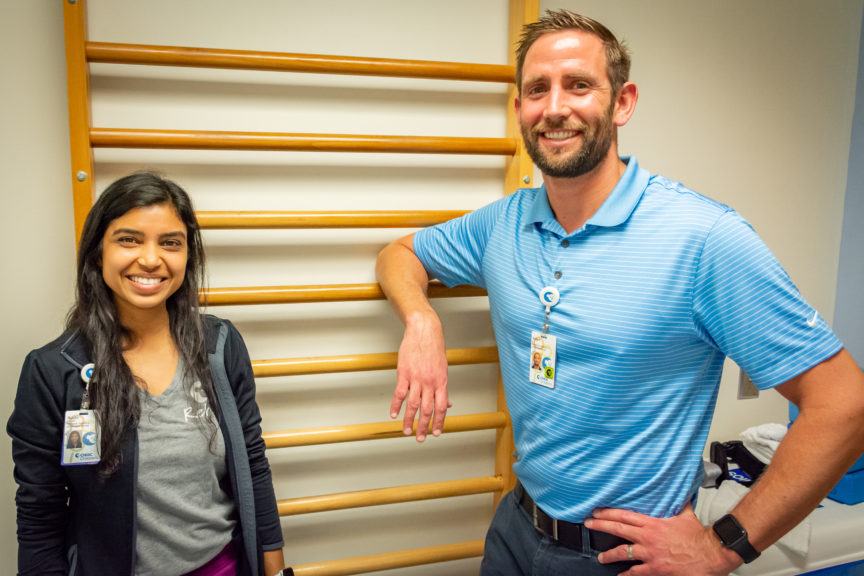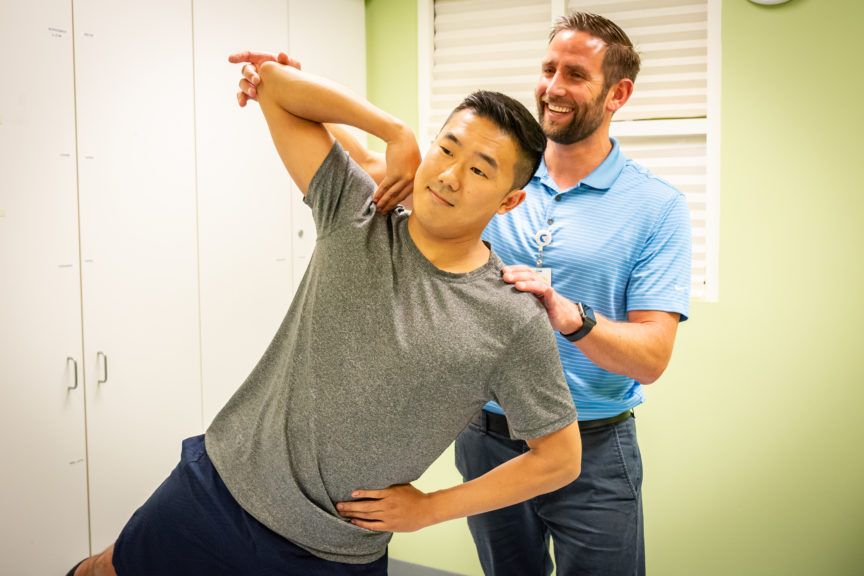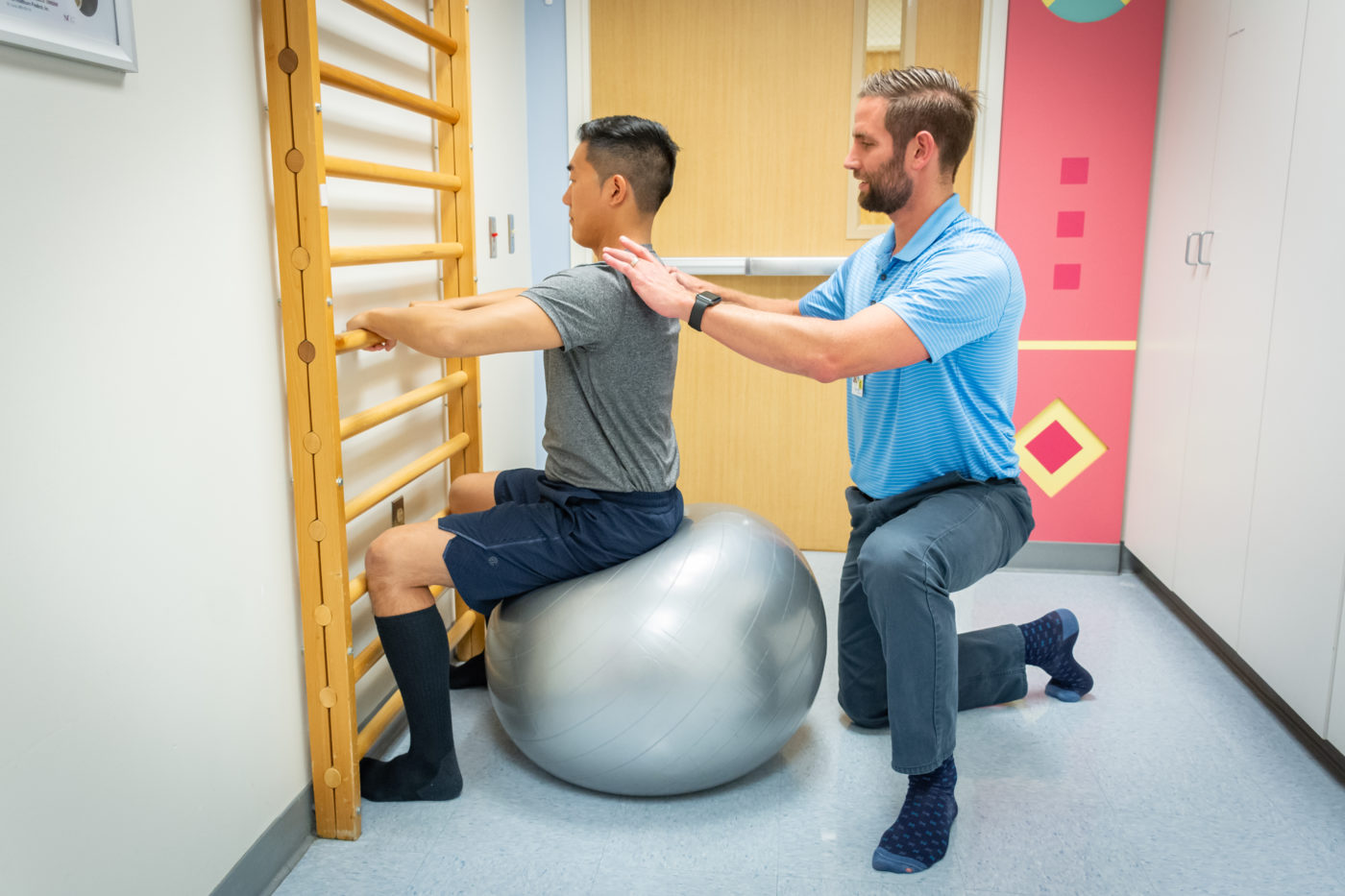Two CHOC pediatric physical therapists, Ruchi Bagrodia and Adam Shilling, answer questions about the Schroth Method, a physical therapy treatment option for patients with idiopathic scoliosis. The non-invasive approach can improve symptoms and, in some cases, can even prevent the need for surgery. Bagrodia and Shilling are among a limited number of specialists in the nation who are certified in the Schroth Method.

What do you want referring physicians to know about the Schroth Method?
Schroth is a research-supported, conservative treatment method used for individuals with Adolescent Idiopathic Scoliosis. Treatment is provided by physical therapists who have completed a rigorous nine-day course and obtained a Schroth certification. The goals of Schroth treatment are to improve posture, prevent curve progression, decrease the likelihood for surgery, reduce pain, increase body awareness (proprioception) and strengthen the postural muscles.
How does Schroth Method differ from traditional physical therapy? What are the benefits?
Traditional physical therapy can be helpful for improving trunk and core strength, range of motion and pain. However, it usually fails to address the three-dimensional changes of the trunk caused by an individual’s unique scoliosis.
With Schroth treatment, each person is guided through specific postural corrections to achieve the most optimal spinal position possible as well as strengthening exercises to maintain this posture during everyday activities. The benefits include improved postural alignment and awareness, a more balanced body position, decreased pain, improved efficiency of breathing and increased trunk and core strength.

Is the Schroth Method a new program?
The Schroth Method was first developed by Katherina Schroth in Germany in the 1920s. In 1968, the Barcelona Scoliosis Physical Therapy School was founded, which follows the original Schroth principles, providing three-dimensional treatment based on breathing and muscle activation. Since then, it has continued to gain attention worldwide due to successful, research-supported outcomes.
Are there certain types or degrees of scoliosis that the Schroth Method is effective for?
A wide range of patients benefit from the Schroth Method. At CHOC, we aim to help patients stop the progression of their curve and avoid surgery. Treatment can also be beneficial for those who have already had surgery to improve strength and body awareness. In addition to looking at curve severity, orthopaedic doctors and Schroth-certified physical therapists will consider the patient’s age and skeletal maturity, as these three factors help indicate likelihood of progression.
What does the Schroth Method entail? Is there a typical course of sessions patients can expect?
The treatment is designed and progressed based on an individual’s specific scoliosis. It involves facilitation techniques for elongation and de-rotation of the spine in different positions, as well as exercises aimed to increase proprioception (body awareness) and strength of postural muscles.
Sessions usually include a brief proprioceptive warm-up followed by postural exercises to promote elongation and de-rotation of the spine in specific areas. Next, the patient is challenged to maintain their newly achieved postural alignment during functional activities and everyday movements, such as getting up off the floor, standing from a chair or climbing stairs.

Most individuals would benefit from attending weekly Schroth Physical Therapy for up to 12 weeks and are also expected to perform a specific home exercise program at least five days per week to achieve best outcomes.
Can the Schroth Method be used in place of traditional physical therapy? Of other scoliosis treatment?
The Schroth Method is specific to treating scoliosis, and not all physical therapists are Schroth Certified. It involves specialized treatment sessions with a physical therapist and supports collaboration with a medical team including the orthopaedic doctor, orthotist and sometimes a psychologist. The Schroth Method is often used in conjunction with bracing when recommended by an orthopaedic doctor. In some cases, it can even prevent the need for spine surgery.
What are the outcomes of Schroth Method treatment? How does it differ from outcomes of other physical therapy methods for scoliosis?
The primary outcome measure for those seeking to avoid surgery is a decrease in Cobb Angle, which is measured on X-rays. Additional outcome measures include self-postural alignment, muscle strength and endurance, balance, shoulder range of motion, height, chest circumference, functional lung volume, pain management and quality of life.




